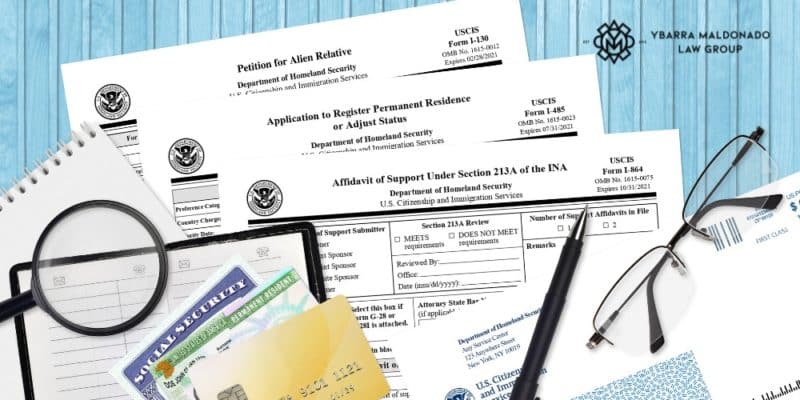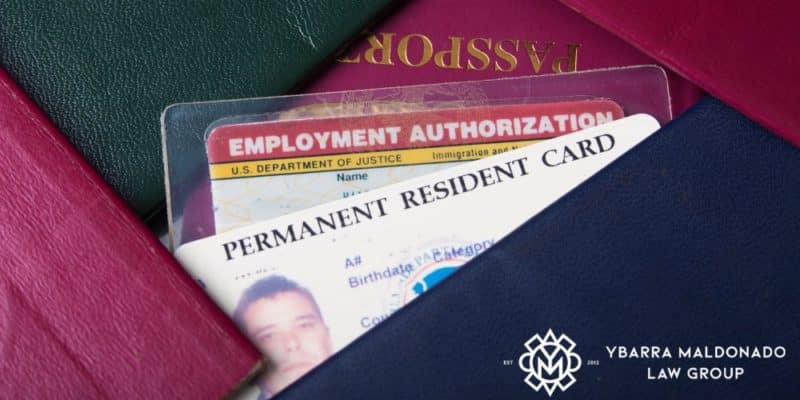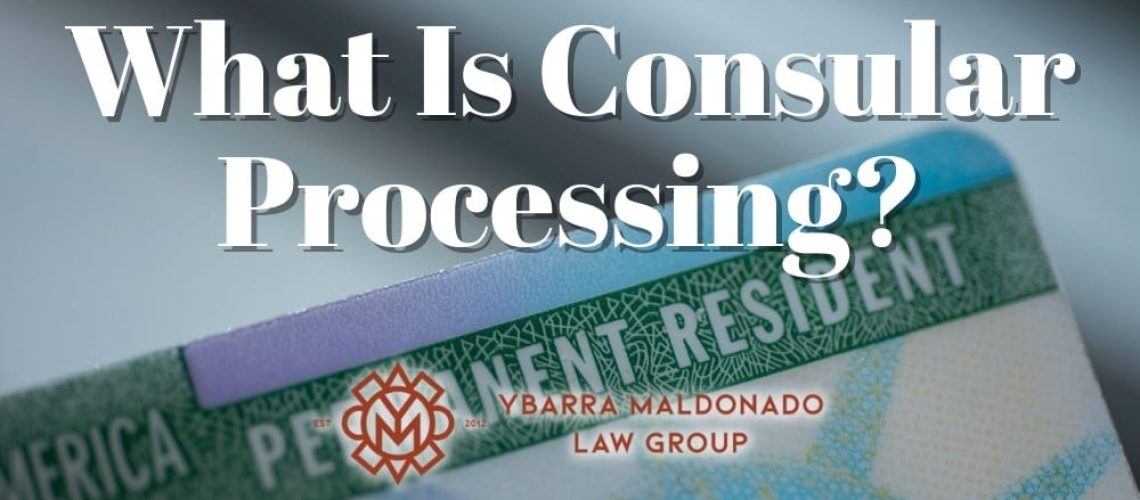There are several ways one can obtain an immigrant visa, from both inside and outside the United States. If you are applying for lawful permanent resident status from outside the United States, you can do this through a process called consular processing. In this blog, our Phoenix immigration attorneys will explain the process of obtaining lawful permanent residence through consular processing.
If you are an immigrant outside the United States, consular processing is a valid method through which you can apply for an immigrant visa. However, many immigration processes change often and can be very confusing to navigate on your own. Working closely with a skilled immigration attorney can ensure that you don’t make costly mistakes during these processes. At Ybarra Maldonado Law Group, we take great pride in serving the communities that we ourselves come from. If you are an immigrant who needs help with an immigration issue, our law firm is here for you. To schedule a case evaluation with us, please call our office at 602-910-4040 today.
What Is Consular Processing for a Green Card?
Consular processing occurs when someone applies for a United States green card from outside the country. The application process for green cards can vary depending on a few factors, including whether you’re applying from within the country or without. When immigrants apply to become a lawful permanent resident from their home country, they go through consular processing (also called CR-1 or IR-1 visa). This means that your immigrant visa petition will be handled by the local consular office or embassy.
The process is not the same as an adjustment of status. Adjustment of status is the green card process one goes through when they apply from inside the United States. The timeline for adjustment of status usually varies from the timeline for consular processing. When you go through consular processing, you’ll wait in your home country until the green card is approved. Adjustment of status and consular processing have more differences that we’ll outline in the next few sections.
Consular Processing vs Adjustment of Status

Not every person who wishes to obtain a green card has the option of choosing between consular processing and adjustment of status. While a very small percentage of immigrants do have this option, most do not. The requirements for each option are very particular, meaning they limit the number of eligible people. Below, we outline the two most significant differences between consular processing and adjustment of status.
Forms and Fees
The packet of forms that one must fill out for adjustment of status tends to be more extensive than the packet for consular processing. Consular processing also tends to be less expensive in terms of immigrant visa processing fees for a typical adult applicant.
The necessary forms for adjustment of status include the following.
-
- Petition for Alien Relative, Form I-130 – $535
- Form I-130A if the beneficiary is a spouse
- Application to Adjust Status, Form I-485 – $1,140
- Report of Medical Examination and Vaccination Record, Form I-693
- Application for Employment Authorization, Form I-131
- Biometrics (only for applicants aged 14-78) – $85
- Petition for Alien Relative, Form I-130 – $535
- TOTAL COST: $1,760
The necessary forms for consular processing include the following.
-
- Petition for Alien Relative, Form I-130 – $535
- Form I-130A if the beneficiary is a spouse
- Immigrant Visa Application, Form DS-260 – $325
- Affidavit of Support, Form I-864
- Report of Medical Examination and Vaccination Report, Form I-693
- USCIS Immigrant Fee – $220
- Petition for Alien Relative, Form I-130 – $535
- TOTAL COST: $1,200
Additionally, the way in which you pay the above fees differs depending on which process you go through. When adjusting status, applicants usually pay all their fees upfront when submitting their application. With consular processing, the applicant pays the fees gradually. Applicants in both processes must complete a medical exam, and the costs of those exams can vary.
Processing Time
When applicants go through adjustment of status, they will submit their application to the United States Citizenship and Immigration Services (USCIS). For consular processing, however, the United States Department of State will process the immigrant visa application. Adjustment of status generally takes a bit longer than consular processing. For a lawful permanent resident relative, processing times may look like the following.
- Adjustment of Status Processing Time: 8 to 14 months
- Consular Processing Time: 5 to 12 months
Who Can Benefit from Consular Processing?

Those undergoing the immigration process for the following immigrant visa types can benefit from the consular process.
- CR1/IR1 spouse visa or CR1/IR2 child visa (if the sponsor is a United States citizen)
- F2A visa types if the sponsor has legal permanent resident status
Those who go through the consular process will need to wait in their home country while the green card immigrant petition is processed. While this can take a while, it is usually a faster process than adjustment of status. Those who already qualify for green cards and who have filed the immigrant visa petition will benefit from consular processing.
If you are planning to sponsor an immigrant, read our related blog on how to sponsor an immigrant 2023.
Consular Processing Eligibility
Eligibility is determined first by whether or not you qualify for a green card. Most people qualify when their family member or employer files an immigrant petition on their behalf. Other people begin by obtaining refugee or asylum status. Keep in mind that there are many other ways to become eligible for a green card and for the consular process. To fully understand all the ways one can become eligible for a green card, take a look at our green card page.
How Do I Start Consular Processing?
It’s important to understand how to begin consular processing abroad. Working with a skilled green card lawyer can help ensure that you take all necessary steps to help the process go as smoothly as possible. In the following sections, we outline the individual steps involved in undergoing consular processing.
Determine Your Eligibility
Find out whether or not you are eligible for a green card. You must be a beneficiary of an approved immigrant petition, and then you must wait until an immigrant visa number is available to you. Then, you can proceed with the immigrant visa petition.
File Your Immigrant Petition
Once you have determined your eligibility, you’ll need another person to file your immigrant visa petition. There are four major ways in which you can qualify for an immigrant visa number.
- Family-based immigration petition: The family member must be a U.S citizen or lawful permanent resident. They must also be immediate relatives or a spouse.
- Employment-based immigrant petition: Employment-based green cards require the employer to file Form I-140, Petition for Alien Worker.
- Humanitarian programs: Certain humanitarian organizations exist that allow immigrants to apply for a green card, although they will be required to meet other eligibility criteria
- Special categories: Other categories exist in which one may file a Petition for Amerasian, Widow(er), and Special Immigrant, Form I-360.
Wait for a Decision on Your Petition
Once the appropriate immigration petition is submitted, you will wait for a decision from USCIS. If the petition is denied, USCIS will inform you of the reasons for the denial, as well as explain whether or not you can appeal the decision. If the petition is approved and you are outside the United States, USCIS will send the approval to the Department of State’s National Visa Center. At this point, you must wait for an Immigrant visa number to become available to you.
Wait for a Message from the State’s National Visa Center
At some point, the National Visa Center (NVC) will let you and your beneficiary know when they have received the petition. They will also send you notifications when you need to pay certain fees and submit certain documents.
Attend Your Appointment
Once a visa number becomes available for you, the consular office will schedule an immigrant visa interview for you. A consular officer at the office will process your case and determine whether or not you are eligible for the visa availability. Attend the interview, and arrive a few minutes early just to be cautious. You can speak with one of our immigration lawyers prior to the interview to gain a better understanding of what to expect. They can give you an idea of the possible green card interview questions you may face.
Receive Your Visa Packet in the Mail
Once your visa has been granted, the consular officer in charge of your case will give you a visa packet. At this time, you will need to pay the USCIS Immigrant Fee. This pays for the processing of the visa packet and the production of your green card.
When you arrive in the United States, you will give the visa packet to the customs officer at the port of entry. The officer will examine your packet and decide whether or not to admit you into the United States permanently.
Receive Your Green Card
Once you are admitted into the United States, you will wait for your green card to arrive in the mail. Keep in mind that you must pay the USCIS Immigrant Fee before they will send your green card. If you wait longer than 45 days to receive your green card, we recommend calling USCIS at 800-375-5283 as soon as possible.
How Long Does Consular Processing Take?
On average, the entire consular processing process takes about 6 to 12 months. However, wait times can be lengthened significantly depending on how backlogged the system is. As of right now, we recommend expecting at least some degree of delay. Certain factors can impact how long your case may take. Speaking with an experienced immigration attorney can help you understand whether or not details about your case could impact your wait time.
What Should I Do After Consular Processing?

While the U.S Embassy or Consulate processes your case, you will need to wait in your home country until your permanent resident card is approved. Once you get your green card, you’ll be free to work and live anywhere in the United States. After a 5-year waiting period (or 3 years for spouses of citizens), you will be eligible to apply for United States citizenship. Speak with a citizenship attorney for more information on how you can achieve this.
Contact a Phoenix Immigration Attorney Today
If you’re struggling with complicated immigration forms and you’re confused about what to do next, the immigration lawyers at Ybarra Maldonado Law Group are here for you. We will evaluate your case and use our extensive knowledge of immigration law to ensure that your consular process goes as smoothly as possible. We’ll also help you remember to pay all consular processing fees, help you practice for your consular interview, and much more. To schedule a case evaluation with us, please call our Phoenix law office at 602-910-4040 today.

